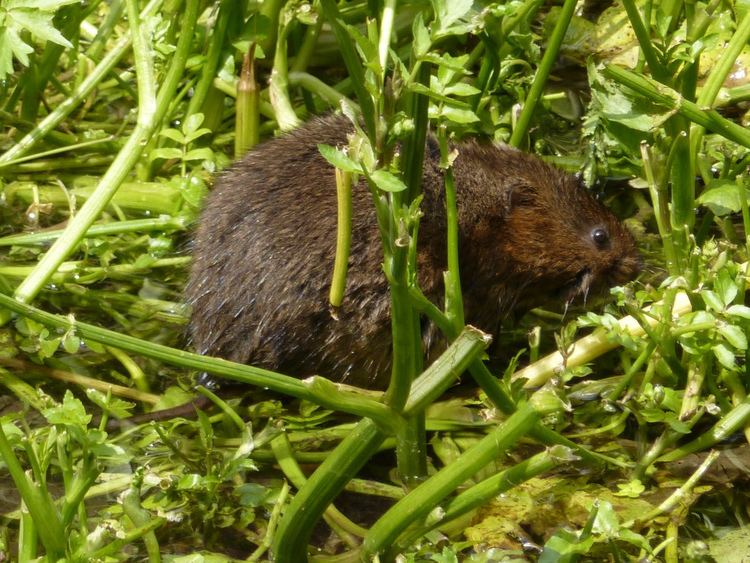 | ||
The United Kingdom Biodiversity Action Plan or (UK BAP) was the UK government's response to the Convention on Biological Diversity, opened for signature at the Rio Earth Summit in 1992. The UK was the first country to produce a national Biodiversity Action Plan. It was published in 1994 and created action plans for priority species and habitats in the UK that were most under threat so as to support their recovery.
Contents
Purpose
The UK Biodiversity Action Plan summarised the most threatened or rapidly declining biological resources of the United Kingdom, and gave detailed plans for their conservation. Individual 'Action Plans' were provided for these habitats and species, and a reporting mechanism was established to demonstrate how the UK BAP was contributing to the United Kingdom's commitment to help reduce or halt the significant losses in global biodiversity, highlighted by the international Convention on Biological Diversity. The original publication included action plans for 45 habitats and 391 species, each identified either as being globally threatened, or where evidence showed there had been a particularly rapid decline of those resources within the UK. Although mainly focused on England, Wales, Scotland, Northern Ireland and the UK Crown dependencies, the UK Biodiversity Action Plan also addressed issues of declining species and habitats overseas in the UK Dependant Territories and British-held territories in Antarctica; areas together containing over 700 endemic species.
History
At the launch of Biodiversity: The UK Action Plan in January 1994, the UK Prime Minister announced the formation of a 'Biodiversity Steering Group', drawing on experts from key conservation organisations and government agencies. It was tasked with identifying and preparing costed action plans for priority species and habitats by 1995, and with developing methodologies for monitoring progress and improving public awareness and access to biodiversity information. In 1995 the Biodiversity Steering Group published a two-volume report, the second part of which contained three important lists of species:
The criteria for selection as a Biodiversity Action Plan species on the 'long list' were:
- being a threatened UK endemic or other globally threatened species;
- being a species where the UK holds more than a quarter of its world population;
- being a species where its numbers or distribution range have declined by more than 25% over the last 25 years;
- being (in some cases) a species found in less than fifteen 10 kilometre squares in the UK;
- being listed in the EU Birds or Habitats Directives, the Bern, Bonn or CITES Conventions, or under the Wildlife and Countryside Act 1981 or the Nature Conservation and Amenity Lands (Northern Ireland) Order 1985.
After devolution in 1998, England, Wales and Scotland had all developed their own individual biodiversity strategies by 2002, with Northern Ireland following shortly afterwards, whilst still also collaborating together.
By 2007 the criteria used to select priority habitats and priority species had been reviewed and the lists updated to propose that 40 UK BAP habitats and 1,149 species were included in the UK priority lists, and a further 123 species were proposed for removal.
As of|2009}} 1,150 species and 65 habitats were identified as needing conservation and greater protection and were covered by UK BAPs. The updated list included the hedgehog, house sparrow, grass snake and the garden tiger moth, while otters, bottlenose dolphins and red squirrels remained in need of habitat protection.
In 2012 the UK Biodiversity Action Plan was succeeded by the 'UK Post-2010 Biodiversity Framework'. This was produced on behalf of the Four Countries' Biodiversity Group (4CBG) by Defra and the JNCC. But the work identifying priority species and priority habitats remains relevant, and was then enshrined in appendices to the NERC Act (2016).
Priority species and priority habitats
As the UK BAP developed, the most important species and habitats that it identified for action were referred to as 'priority species' and 'priority habitats' ( also: 'UK BAP species' and UK BAP habitats').
Regional response
The regional response to guidelines published in 1995 led to 162 Local Biodiversity Action Plans (LBAPs) being produced for England, Wales and Scotland, with further action plans later produced for Northern Ireland. These were usually formulated by a broad partnership of conservation organisations working on county and similar-sized areas of Britain. LBAPs play an important role in translating national and sub-national strategies, priorities and targets into direct local action on the ground, and in identifying which UK priority species and habitats are found in that local area.
